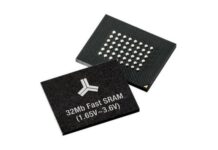Hyderabad, India– Silicon Labs has announced two new integrated circuit families designed for the smallest form factor IoT devices. It is the xG27 family of Bluetooth systems on chips (SoCs) and the BB50 microcontroller unit (MCU).
These are designed for the smallest IoT devices. The xG27 and BB50 families range in size from 2 mm-squared, about the width of a #2 pencil lead, to 5 mm-squared, less than the width of a standard #2 pencil. These offer IoT device designers energy efficiency, high performance and trusted security. Further, in the case of the xG27 family, wireless connectivity. This makes the xG27 SoC family and BB50 MCU ideal for tiny, battery-optimized devices.
Silicon Labs CEO Matt Johnson said, “The xG27 SoCs and BB50 MCUs are helping developers build exciting new devices while also simplifying their development processes, all while maintaining the low-power and small form-factor requirements for extremely small devices.”
xG27 SoC Connects One of World’s Smallest Wearable Devices
The new xG27 family of SoCs comprises the BG27, for Bluetooth connectivity, and the MG27, supporting Zigbee and other proprietary protocols. These are built around the ARM Cortex M33 processor. The BG27 and MG27 share several common features designed to make them the ideal SoC for small form-factor devices, including:
- Wafer-level Chip Scale Packaging as small as 2.3 mm x 2.6 mm. It is ideal for compact and unobtrusive devices like medical patches, continuous glucose monitors, wearable electrocardiograms, and asset tags in various settings like retail and agriculture.
- Integrated DCDC Boost that can allow the devices to operate on batteries as low as 0.8 V. Thereby reducing their devices’ size, form factor, and cost.
- Integrated Coulomb Counter that enables battery level monitoring. This is to avoid battery depletion during the use of applications, improving user experience and product safety.
- Advanced security with Silicon Labs Secure Vault with Virtual Security Engine (VSE) for secure boot and debug hardened against glitch attacks, tamper protection, and additional features designed to protect the device and its users’ data from local and remote cyber threats.
- Shelf Mode that reduces energy use to less than 20 nano amperes. So that devices can be transported and stocked on shelves while maintaining nearly full battery life for the end-user.
Lura Health:
Lura Health, a medical device manufacturer and participant in the Alpha program for BG27. It has already selected the new SoC to form the basis of its new in-development smart wearable. But unlike some of the most common wearables on the wrist or other external skin, the new Lura Health monitor goes in a person’s mouth. Specifically, the device is so small that it is glued to a tooth. With the device, dentists and other clinicians can collect important data from saliva. The data is used to test for over 1,000 health conditions.
The BG27 and MG27 open up and extend a wide range of possible applications and use cases. You can read blog posts detailing how the xG27 family enhances the smart home and connected health markets.
New BB50 8-bit MCUs Increase Design Flexibility While Reducing Cost and Complexity
While the IoT is built around connectivity, many devices do not need to be connected. Further, there are non-connected versions of connected devices.
For example, in commercial lighting, the application may need a simple control mechanism for the light based on ambient light or occupancy sensors. In the consumer goods space, many toothbrush manufacturers have recently built connectivity into their brushes, which provides users with friendly reminders and insights about their brushing patterns. However, some consumers still prefer non-connected versions of the device and simply want an electric toothbrush.
While, in theory, this seems like a simple problem to solve, it can often lead to inventory and SKU sprawl, with the non-connected version of a product being designed differently than the connected version. Add in different cosmetic effects like color or if the outer material is metal or plastic, and very quickly, management of inventory and various designs becomes costly and complex. Other devices like LED lighting, keypads, drones, toys, and anything with flashing lights or a motor still require a processor to control those essential functions, regardless of whether it is connected for added functionality.
The new BB50 MCU and the larger BB5x MCU family help address these challenges with the following:
- Common tools and software for 8-bit and 32-bit, like Silicon Labs Simplicity Studio and a fully-featured 8-bit compiler.
- A high-performance core optimized for a large number of single-cycle instructions to improve operating efficiency.
- Wide operating voltages and low-power modes for battery applications to improve energy efficiency for a large variety of battery sizes.
- Various packaging options ranging from 2 mm-squared to 5 mm-squared to optimize for size needs.
- Hundreds of firmware examples allow customers to easily add functionality to an existing product.

















